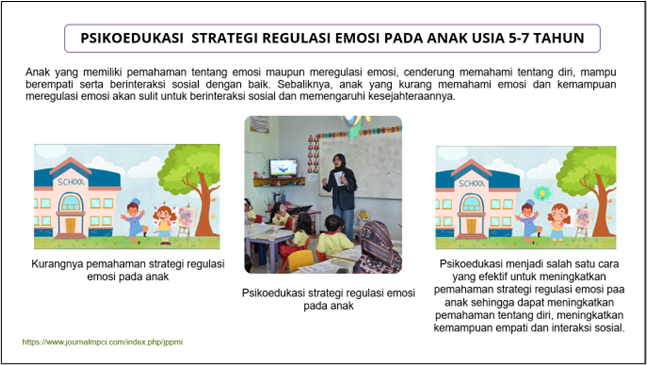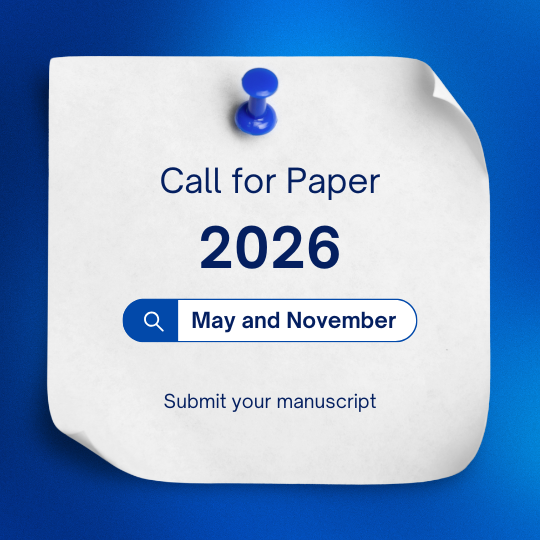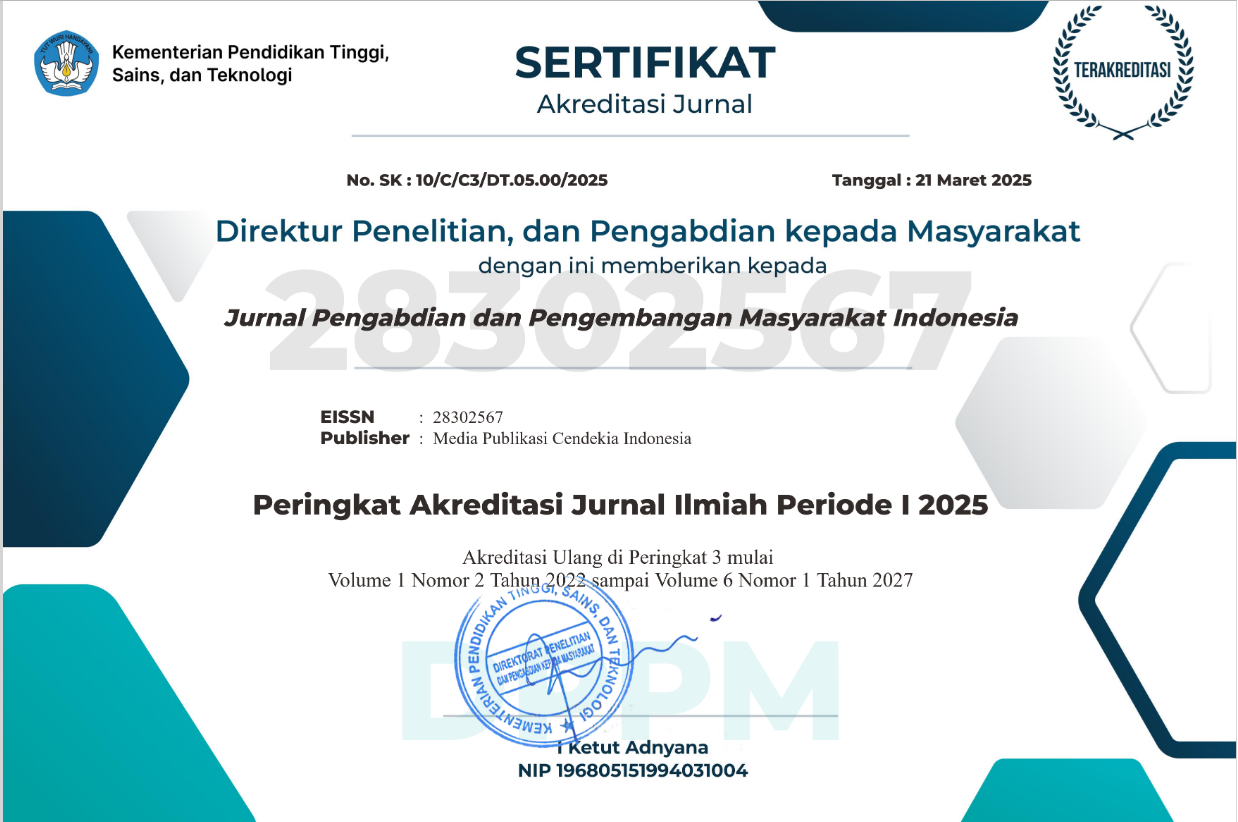Psikoedukasi Strategi Regulasi Emosi Pada Anak Usia 5-7 Tahun
Psychoeducation Emotion Regulation Strategies for Children Aged 5-7
Keywords:
Anak, Emosi, Psikoedukasi, RegulasiAbstract
Emosi adalah respons psikologis dan fisiologis terhadap peristiwa tertentu. Anak yang dapat memahami emosi dengan baik dan mengatur emosinya akan mampu mengenali dan memahami dirinya sendiri, beradaptasi dengan baik, lebih mandiri, mampu memahami perasaan orang lain sehingga dapat meningkatkan keterampilan sosialnya. Sebaliknya, anak yang kesulitan mengatur emosi akan sulit beradaptasi dengan baik, kurang empati dan hubungan sosial dengan orang lain. Program Pengabdian kepada Masyarakat (PKM) ini fokus pada psikoedukasi strategi regulasi emosi pada anak. Tujuannya untuk meningkatkan pemahaman anak dalam mengatur emosi negatif yang dirasakannya. Video edukasi digunakan untuk melakukan psikoedukasi pada 58 anak usia 5-7 tahun. Analisis data dilakukan dengan menggunakan uji Wilcoxon’s matched-pairs sign-rank test. Hasil analisis menunjukkan terjadi peningkatan signifikan peserta yang memberikan jawaban strategi regulasi emosi yang tepat sebelum dan setelah psikoedukasi pada emosi marah (T = 101,5; z = -2,311; p = 0,008) dan emosi takut (T = 49,5; z = -4,011; p = <0,001). Namun, tidak terjadi peningkatan pada emosi sedih (T = 104,5; z = 0,827; p = 0,359). Implikasi dari kegiatan pengabdian ini adalah perlunya kerjasama antara orang tua dan guru dalam meningkatkan strategi pengaturan emosi negatif pada anak melalui aktivitas atau lebih peka terhadap emosi yang dirasakannya.
Downloads
References
Arias, J D L F., Zapata, L., Vicente, J M M., Sander, P., & Cardelle-Elawar, M. (2014). The role of personal self-regulation and regulatory teaching to predict motivational affective variables, achievement, and satisfaction: A structural model. https://doi.org/10.3389/fpsyg.2015.00399
Belden, AC., Luby, JL., Pagliaccio, D., & Barch, DM. (2014). Neural activation associated with the cognitive emotion regulation of sadness in healthy children. Dev Cogn Neurosci, 9. 136-47. https://doi.org/10.1016/j.dcn.2014.02.003
Carthy, T., Horesh, N., Apter, A., Edge, M. D., and Gross, J. J. (2010). Emotional reactivity and cognitive regulation in anxious children. Behav. Res. Ther. 48, 384–393. https://doi.org/10.1016/j.brat.2009.12.013
Cole, P. M., Dennis, T. A., Smith-Simon, K. E., and Cohen, L. H. (2009). Preschoolers’ emotion regulation strategy understanding: relations with emotion socialization and child self-regulation. Soc. Dev. 18, 324–352. https://doi.org/10.1111/j.1467-9507.2008.00503.x
DeCicco, J. M., Solomon, B., and Dennis, T. A. (2012). Neural correlates of cognitive reappraisal in children: an ERP study. Dev. Cogn. Neurosci. 2, 70–80. https://doi.org/10.1016/j.dcn.2011.05.009
De la Fuente J, Zapata L, Martínez-Vicente JM, Sander P and Cardelle-Elawar M (2015) The role of personal self-regulation and regulatory teaching to predict motivational-affective variables, achievement, and satisfaction: a structural model. Front. Psychol. 6:399. doi: 10.3389/fpsyg.2015.00399
Dennis, T. A., & Kelemen, D. A. (2009). Preschool children’s views on emotion regulation: Functional associations and implications for social-emotional adjustment. International Journal of Behavioral Development, 33(3), 243-252. https://doi.org/10.1177/0165025408098024
Ekman, P. (2003). Emotions revealed: Recognizing faces and feelings to improve communication and emotional life. Times Books/Henry Holt and Co.
Endrerud, M S., & Vikan, A. (2007, January 1). Five to seven year old children’s strategies for regulating anger, sadness, and fear. Taylor & Francis, 59(2), 127-134. https://doi.org/10.1027/1901-2276.59.2.127
Essau, C., Leblanc, S., & Ollendick, T. (2017). Emotion regulation and psychopatology in children and adolescents. Oxford University Press.
Goubet, KE., & Chrysikou EG. (2019) Emotion Regulation Flexibility: Gender Differences in Context Sensitivity and Repertoire. Front. Psychol. 10:935. doi: 10.3389/fpsyg.2019.00935
Gross, J. J., & John, O. P. (2003). Individual differences in two emotion regulation processes: Implications for affect, relationships, and well-being. Journal of Personality and Social Psychology, 85(2), 348–362. https://doi.org/10.1037/0022-3514.85.2.348
Gross, J. J., & Thompson, R. A. (2007). Emotion Regulation: Conceptual Foundations. In J. J. Gross (Ed.), Handbook of emotion regulation (pp. 3–24). The Guilford Press.
Kopp, C. B. (1989). Regulation of distress and negative emotions: A developmental view. Developmental Psychology, 25(3), 343–354. https://doi.org/10.1037/0012-1649.25.3.343
Liu, W., Liu, F., Chen, L., Jiang, Z., & Shang, J. (2019). Cognitive Reappraisal in Children: Neuropsychological Evidence of Up-Regulating Positive Emotion from an ERP Study. Frontiers Media, 10. https://doi.org/10.3389/fpsyg.2019.00147
Lopes, P N., Navas, J M M., Bozal, R G., Kremenitzer, J P., & Salovey, P. (2012). The Role of Knowledge and Skills for Managing Emotions in Adaptation to School. SAGE Publishing, 49(4), 710-742. https://doi.org/10.3102/0002831212443077
Paulus, F., Ohmann, S, Möhler, E., Plener, P., & Popow, C. (2021). Emotional Dysregulation in Children and Adolescents With Psychiatric Disorders. A Narrative Review. Frontiers in Psychiatry, 12. https://www.frontiersin.org/journals/psychiatry/articles/10.3389/fpsyt.2021.628252
Panlilio, C C., Harden, B J., & Harring, J R. (2017, June 8). School readiness of maltreated preschoolers and later school achievement: The role of emotion regulation, language, and context. Elsevier BV, 75, 82-91. https://doi.org/10.1016/j.chiabu.2017.06.004
Pons, F., & Harris, P. (2004). Emotion comprehension between 3 and 11 years: Developmental periods and hierarchical organization. European Journal of Developmental Psychology, 1(2). 127-152. https://doi.org/10.1080/17405620344000022
Qashmer A. F. (2023). Emotion regulation among 4-6 year old children and its association with their peer relationships in Jordan. Frontiers in psychology, 14, 1180223. https://doi.org/10.3389/fpsyg.2023.1180223
Rusdawati, R & Eliza, D. (2022). Pengembangan video pembelajaran literasi sains anak usia 5-6 tahun untuk belajar dari rumah. Jurnal Obsesi Pendidikan Anak Usia Dini, 6(4). 3648-3658. http://dx.doi.org/10.31004/obsesi.v6i4.1750
Sabatier, C., Cervantes, D R., Torres, M M., Ríos, O L H D L., & Palacio, J. (2017). Emotion Regulation in Children and Adolescents: concepts, processes and influences. Psicología desde el Caribe, 34(1), 75-90. https://dialnet.unirioja.es/servlet/articulo?codigo=6552640
Sala, M., Pons, F., & Molina, P. (2014). Emotion regulation strategies in preschool children. British Journal of Developmental Psychology, 32(4). 440-453. https://doi.org/10.1111/bjdp.12055
Shelleby, E C., Shaw, D S., Cheong, J., Chang, H., Gardner, F., Dishion, T J., & Wilson, M N. (2012, April 11). Behavioral Control in At-Risk Toddlers: The Influence of the Family Check-up. Taylor & Francis, 41(3), 288-301. https://doi.org/10.1080/15374416.2012.664814
Walsh, M. (2013). A study of childrens emotion regulation, coping and self-efficacy beliefs (Doctoral dissertation, Institute of Education, University of London).

Published
How to Cite
Issue
Section
Copyright (c) 2025 Dita Rachmayani, Cleoputri Yusainy, Elmy Bonafita Zahro

This work is licensed under a Creative Commons Attribution-NonCommercial-ShareAlike 4.0 International License.










